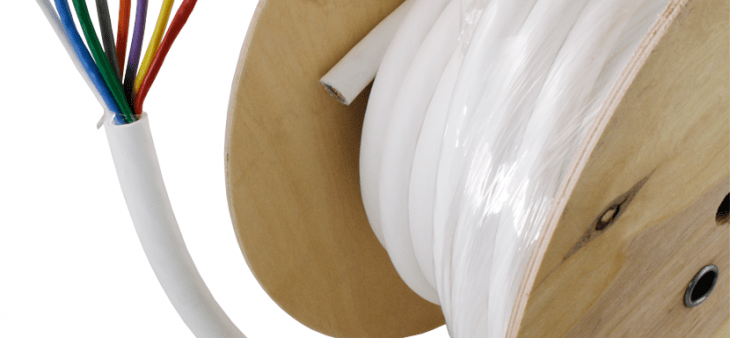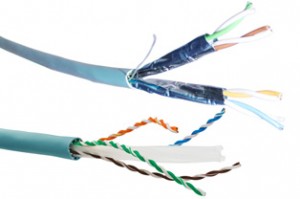
Twisted pairs are made up of two insulated copper wires that are twisted together. The twisting is done to help cancel exterior electromagnetic interference. Crosstalk interference can come from other pairs within a cable. Each type of twisted pair cable has bandwidth and data rate specifications. Due to its thinner diameter, a twisted wire is often found in telephone or network cables. Coaxial or optical fibre options deliver greater bandwidth in comparison to twisted pair cabling. Twisted pair is often for home use, though higher twisted pair grades can be used for LAN installs.
Twisted Pair Cable in Stranded or Solid Versions

When two wires with separate insulation are twisted around one another, twisted pair cable is the result. The cable is available in solid or stranded versions. Stranded wiring offers greater flexibility for installs that require bending. Solid wiring, also known as solid core cable, can cover more distance but is not designed for installs that require physical flexing. Both the shielded and unshielded twisted pairs are available in solid or stranded variations.
STP and UTP Characteristics
A shielded twisted pair and unshielded twisted pair are abbreviated as STP and UTP. STP features two insulated copper wires that are twisted around one another and then covered with an additional shield. This extra covering boosts interference protection. STP is often utilized in Ethernet applications. UTP cables are a popular cable choice for LANs. It is comprised of two twisted wires without any shielding. Noisier environments benefit from STP. Comms Express specializes in all types of cable for network connections, including twisted-pair wiring.
Related Links
UTP LSOH / LSZH Cat5e Bundled 8 Core, 8 x 4 Twisted Pair
Excel Cat6a Cable Screened Twisted Pair (U/FTP) S-Foil Cable External Grade
Excel Cat6A Cable Shielded Twisted Pair (F/FTP)
